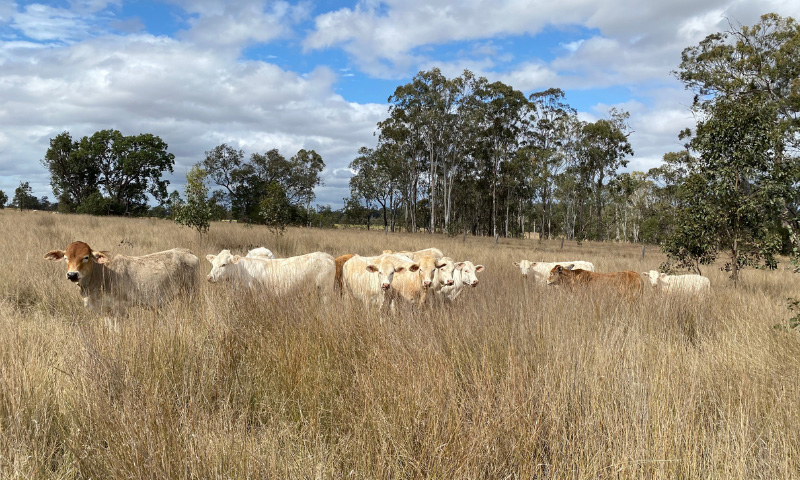Grazing management is an important aspect of pasture management and the beneficial impact of a well implemented grazing plan can’t be underestimated. Whether you are in an area where it is viable to use fertiliser or grazing livestock in marginal country, the use of grazing management can assist to restore soil fertility.
Grazing Plan & Key Points to Remember
- Plan paddock sizes
- Plan watering points and manage animal movements to ensure maximise stock density for minimum periods of time.
- High density grazing avoids patch grazing and encourages all over even “top down” grazing and also creates animal impact. Stock trample and open up un-grazed plants and this assists to improve water cycle by laying litter and altering the soil surface.
- Improved Water cycle means that rainfall soaks in quicker because the ground cover breaks the droplet and slows the flow. Improved ground cover increases root mass and depth, creating greater pathways for water to travel.
- In addition, greater leaf growth increases photosynthesis and carbon capture, provides food for microbes and builds humus levels in soil, increasing water holding capacity.
Match stocking rate to carrying capacity
To ensure that a good level of ground cover is maintained, no greater than 40-60% of pasture should be planned to be eaten. This assists to build up feed supplies over the growing season to ensure adequate fodder for use (with the addition of supplements as required) over the non-growing season.
Adjust pasture rest period to suit the growth rate of the pasture
The faster growing the pasture, the shorter the rest period required. For instance, irrigated ryegrass may have a 21-day rest period whereas a dry season native pasture in the non-growing season could require a 100 plus day rest period.
For tropical pasture such as Rhodes Grass, the aim is to maintain pasture in Phase 2 growth for as long as possible.
This supports efficient Photosynthesis, increases root growth and maximises nutrition of the plant.
Phase 2 growing stage for tropical pastures is the mid to later vegetative stage prior to full seeding. At this point grass grows the quickest and provides the best feed value for both quality and quantity.

Use a diversity of plants and animals to improve nature’s ecosystem
A diversity of plants such as annuals and perennials, grasses, legumes, forbes, shrubs, trees and herbs as well as a diversity of animals (cattle, sheep, goats, pigs, chooks) assists to create a more diverse soil biology. Plant diversity has beneficial effects on root depth, mineral extraction and accumulation, builds up organic matter and the diversity of soil biology, bird and insect diversity, water cycle, mineral cycle and energy flow. Energy flow refers to increased photosynthesis, increased respiration, increased cycling of carbon, increase food for microbes, microbes make more food available for plants etc.
Manage livestock effectively
All aspects of animal husbandry have an impact on production and gross margins. Key points to remember are to ensure the provision of adequate, good quality water, that nutritional requirements are met and to monitor animal health, treating for parasites as required.
Supplement Livestock to meet market requirements
Maximise livestock weight gain by providing relevant supplements for the seasonal conditions. For instance, the use of MegaMin Extra Magnesium or MegaMin BovaMag for livestock grazing oats, or MegaMin Graze and Grow when grazing dry feed, and MegaMin SulPhos during the wet season.
Respond quickly to observations, be strict on timing of activities
Examples would be:
- Have a strict timeline for weaning. This may vary depending on the season, for example brought forward in tough/drought conditions.
- If dung is stacking up, add a protein supplement.
- Use pasture budgets to determine stocking rate over the dry season and have trigger dates and knows classes of livestock that can be marketed at these times.
Monitor pasture health, soil biological health and nutrition of pasture
Monitor soil health by digging in the soil to observe how quickly trash breaks down, worm activity and, plant root development. Many graziers report that after using NatraMin urine patches in the pasture are less noticeable and that manure breaks down quickly. Click here for more information about NatraMin!
A soil test can identify the underlying mineral deficiencies in soil and pastures, providing a valuable guide for supplement requirements for your stock. Our team of Field Advisors are here to work with you to provide purpose led solutions to ensure optimum nutrition for your livestock and soil. For more information about our services visit our page below!
